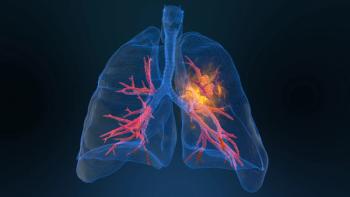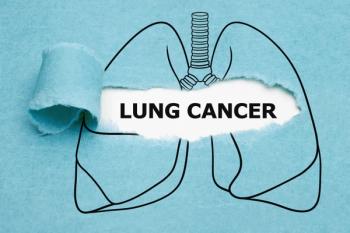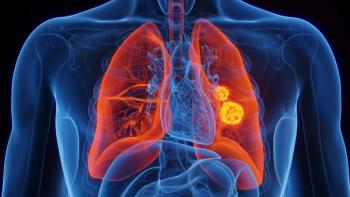
Pembrolizumab Plus Radiation Therapy Improves NSCLC Outcomes, Study Finds
Researchers analyzed 2 randomized studies to learn how adding radiation therapy to pembrolizumab immunotherapy affects non-small cell lung cancer patient outcomes.
Adding radiation therapy (RT) to pembrolizumab immunotherapy increased patient responses and improved outcomes in metastatic non-small cell
The phase 2 PEMBRO-RT (
Each trial saw a potential benefit of RT in the combination treatment cohort, but researchers opted to conduct a pooled analysis due to the small sample size of each trial. The end points of the analysis were best abscopal response rate (ARR), best abscopal disease control rate (ACR), best 12-week ARR, best 12-week ACR, progression-free survival (PFS), and overall survival (OS).
In both trials, patients were randomly assigned to receive either pembrolizumab or combination treatment with pembrolizumab and RT. The PEMBRO-RT trial stratified patients by smoking status (<10 vs ≥10 pack-years). The MDACC trial separated them into groups based on the feasibility of the RT schedules. Neither trial was blinded due to the nature of intervention with RT.
Patients in both studies received 200 mg of pembrolizumab intravenously every 3 weeks, with or without RT. The combination therapy cohort in the PEMBRO-RT trial received the first dose of pembrolizumab less than 1 week after the last dose of RT, and the MDACC trial received the first dose of pembrolizumab concurrently with the first dose of RT. The intention-to-treat populations from both studies were included in the pooled analysis.
Of the 148 patients included in the analysis, 76 were assigned to the pembrolizumab cohort and 72 received the added RT. There were 124 patients (84%) with non-squamous histological features, and 111 (75%) had received chemotherapy prior to the study. Baseline variables, including metastatic disease volume and PD-L1 status, were the same in both treatment groups.
Lung metastases, intrathoracic lymph nodes, and lung primary disease were the most treated areas (39%, 21%, and 17%, respectively).
Median follow-up was 33 months, and the best ARR was 19.7% with pembrolizumab alone, compared to 41.7% with combination therapy (odds ratio [OR], 2.96; 95% CI, 1.42-6.20; P = .0039). The best ACR was 43.4% in the pembrolizumab group compared with 65.3% with added RT (OR, 2.51; 1.28-4.91; P = .0071).
Median PFS, another key end point, was 4.4 months in the pembrolizumab cohort and 9 months in the pembrolizumab-RT cohort (hazard ratio [HR], 0.67; 95% CI, 0.45-0.99; P = .045). Median OS in the pembrolizumab group was 8.7 months, while the combination therapy group had a median OS of 19.2 months (HR, 0.67; 0.54-0.84; P = .0004). Authors reported no new findings in regard to the safety profile of the treatment.
Study authors concluded that combination treatment with pembrolizumab and RT was more effective than receiving pembrolizumab alone, and that the added RT significantly increased NSCLC patient outcomes. They note that the results of the analysis call for a future phase 3, randomized trial to validate the findings.
Reference
Theelan W, Chen D, Verma V, et al. Pembrolizumab with or without radiotherapy for metastatic non-small-cell lung cancer: a pooled analysis of two randomised trials. Lancet. Published online October 20, 2020. Accessed October 23, 2020. doi:10.1016/S2213-2600(20)30391-X
Newsletter
Stay ahead of policy, cost, and value—subscribe to AJMC for expert insights at the intersection of clinical care and health economics.







































